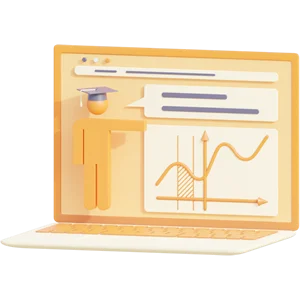PATHOPHYSIOLOGY FOR DISEASE IN ADULTS AND CHILDREN 8 TH EDITION BY MCCANCE HUETHER (TEST BANK) ❖ BEST FOR BIOLOGY REVHOPISION GUIDE ❖ ANSWERS WITH EXPLANATION ❖ CHAPTER1-50
PATHOPHYSIOLOGY
FOR DISEASE IN
ADULTS AND
CHILDREN 8
TH EDITION
BY MCCANCE
HUETHER (TEST BANK)
❖ BEST FOR BIOLOGY
REVHOPISION GUIDE
❖ ANSWERS WITH
EXPLANATION
❖ CHAPTER1-50
Chapter 1: Cellular Biology
MULTIPLE
CHOICE
1. Which statement best describes the cellular function of
metabolic absorption?
a. Cells can produce proteins. c. Cells can take in and use
nutrients.
b. Cells can secrete digestive enzymes. d. Cells can
synthesize fats.
ANS: C
In metabolic absorption, all cells take in and use nutrients
and other substances from theirsurroundings. The remaining
options are not inclusive in their descriptions of cellular
metabolic absorption.
PTS: 1 REF: Page 2
2. Most of a cell’s genetic information, including RNA and DNA,
is contained in the:
a. Mitochondria c. Nucleolus
b. Ribosome d. Lysosome
ANS: C
The nucleus contains the nucleolus, a small dense structure
composed largely of RNA, most of the cellular DNA, and the
DNA-binding proteins, such as the histones, which regulate
its activity. The other options do not contain most of a cell’s
genetic information.
PTS: 1 REF: Page 2
3. Which component of the cell
prodNuUceRsSIhNyGdTroBg.CenOMperoxide (H2O2) by using
oxygen to remove hydrogen atoms from specific
substrates in an oxidative reaction?
a. Lysosomes c. Ribosomes
b. Peroxisomes d. Oxyhydrosomes
ANS: B
Peroxisomes are so named because they usually contain
enzymes that use oxygen to remove hydrogen atoms from
specific substrates in an oxidative reaction that produces
H2O2, which is a powerful oxidant and potentially destructive
if it accumulates or escapes from peroxisomes. Ribosomes
are RNA-protein complexes (nucleoproteins) that are
synthesized in the nucleolus and secreted into the cytoplasm
through pores in the nuclear envelope called nuclear pore
complexes. Lysosomes are saclike structures that originate
from the Golgi complex and contain more than 40 digestive
enzymes called hydrolases, which catalyze bonds in proteins,
lipids, nucleic acids, and carbohydrates. Oxyhydrosomesare
involved in enzyme production.
PTS: 1 REF: Page 8
4. Which cell component is capable of cellular autodigestion
when it is released during cellinjury?
a. Ribosome c. Smooth endoplasmic
reticulum
b. Golgi complex d. Lysosomes
ANS: D
The lysosomal membrane acts as a protective shield
between the powerful digestive enzymes within the
lysosome and the cytoplasm, preventing their leakage into
the cytoplasmic matrix. Disruption of the membrane by
various treatments or cellular injury leads to a release of the
lysosomal enzymes, which can then react with their specific
substrates, causing cellular self-digestion. The other options
do not correctly describe thisprocess.
PTS: 1 REF: Pages 7-8
5. What is the sequence of steps in the development of a
digestive enzyme by the pancreascells from the initial
transcription to the release from the cell?
a. The enzyme is transcribed from DNA by RNA in the
nucleus, proceeds to theribosome for synthesis, and
is transported in a secretory vesicle to the cell
membrane.
b. The enzyme is transcribed from RNA by DNA in the
nucleus, proceeds to the lysosome for synthesis, and is
transported in an encapsulated membrane to the cell
membrane.
c. The enzyme is transcribed by the mitochondria in the
nucleus, proceeds to the ribosome for synthesis, and is
transported in a cytoskeleton to the cell membrane.
d. The enzyme is transcribed from DNA by RNA in the
nucleus, proceeds to the Golgi complex for synthesis,
and is transported in a cytosol to the cell membrane.
ANS: A
The enzyme is transcribed from DNA by RNA in the
nucleus, proceeds to the ribosomefor synthesis, and is
transported in a secretory vesicle to the cell membrane.
The other options do not correctly describe this process.
NURSINGTB.COM PTS: 1 REF: Page 7 | Figure 1-5
6. During which phase of the cell cycle is DNA synthesized?
a. G1 c. G2
b. S d. M
ANS: B
The four designated phases of the cell cycle are: (1) the G1
phase (G = gap), which is the period between the M phase
(M = mitosis) and the start of DNA synthesis; (2) the S phase
(S = synthesis), during which DNA is synthesized in the cell
nucleus; (3) the G2 phase, during which RNA and protein
synthesis occurs, the period between the completion of DNA
synthesis and the next phase (M); and (4) the M phase,
which includes nuclear and cytoplasmic division.
PTS: 1 REF: Page 37
7. What organic compound facilitates transportation across
cell membranes by acting asreceptors, transport
channels for electrolytes, and enzymes to drive active
pumps?
a. Lipids c. Proteins
b. Proteases d. Carbohydrates
ANS: C
Proteins act as (1) recognition and binding units (receptors)
for substances moving in andout of the cell; (2) pores or
transport channels for various electrically charged particles
called ions or electrolytes and specific carriers for amino
acids and monosaccharides; and
(3) specific enzymes that drive active pumps that promote
the concentration of certainions, particularly potassium (K+
),
within the cell while keeping concentrations of otherions, for
example, sodium (Na+
), below the concentrations found in
the extracellular environment. The other options do not
correctly describe this process.
PTS: 1 REF: Page 13 | Page 15
8. Understanding the various steps of proteolytic cascades,
such as caspase-mediated apoptosis and complement
cascades, may be useful in designing drug therapy for
whichhuman diseases?
a. Cardiac and vascular disorders
b. Autoimmune and malignant disorders
c. Gastrointestinal and renal disorders
d. Endocrine and gastrointestinal disorders
ANS: B
Understanding the various steps involved in this process is
crucial for designing drug interventions. Dysregulation of
proteases features prominently in many human diseases,
including cancer, autoimmunity, and neurodegenerative
disorders. The other options donot correctly describe this
process.
PTS: 1 REF: Page 15
9. Which structure prevents water-soluble molecules from entering cells across the plasma
membr
ane?
NURSINGTB.COM
a. Carbohydrate chains c. Membrane channel proteins
b. Glycoprotein channels d. Lipid bilayer
ANS: D
The bilayer’s structure accounts for one of the essential
functions of the plasma membrane. It is impermeable to
Preview document (3 of 951 pages)
Knoowy benefits
$ 44.84
 Money back guarantee
Money back guarantee
 Documents can be downloaded immediately
Documents can be downloaded immediately
 $0.50 discount when paying with balance
$0.50 discount when paying with balance
-
 Receive free quiz questions with document
Receive free quiz questions with document

Specifications
- School: Chamberlain College Of Nursing
- Course: NURSING
Document
- Section: Examinations
- Made on: 01-31-2024
- Type: .pdf
- Pages: 951
- Language: English
Tags
Seller
Earn from your summaries?
Subjects of NURSING - Chamberlain College Of Nursing
More NURSING ›ati ati comprehensive predictor ati pharmacology proctored community health comprehensive fundamentals health care health care / nursing health care/ nursing healthcare hesi hesi rn exit leadership maternal newborn med surg medical surgical mental health nurs nursing nursing & health nutrition pediatrics pharmacology test bank tncc
 Deal: get 10% off when you purchase 3 or more items!
Deal: get 10% off when you purchase 3 or more items!
Deal: get 10% off when you purchase 3 or more items!










